6. Near Dark (1987)
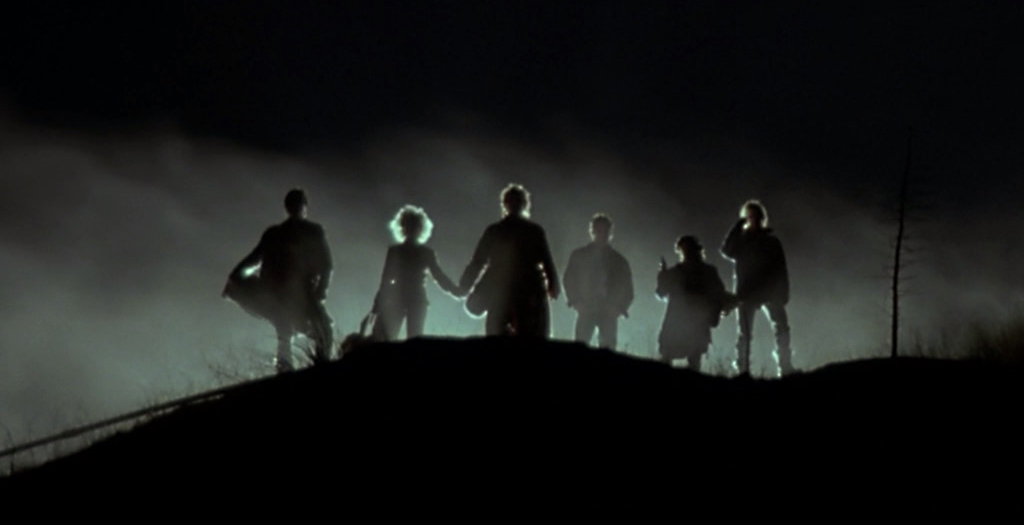
“Action cinema is pure cinema.” So said Kathryn Bigelow, co-writer and director of this Western-style vampire flick. But how many of us drink pure alcohol, or breathe pure oxygen, or even particularly care about “pure cinema”? Action may be pure, but it isn’t everything cinema has to offer.
Then again, the occasional “shot” can be a fun experience, as is the case with this piece of pulp about Caleb (Adrian Pasdar), a young contemporary Texan who one night meets and woos Mae (Jenny Wright). When he tries to kiss her he ends up being bitten on the neck and subsequently, as he stumbles home, begins to burn in the rays of the rising sun. He is rescued by Mae and her band of nomadic vampires. Caleb is told he can join the crew, but only if he learns how to kill.
Some films set out to be art, whilst others aim merely to entertain, which is sometimes all you need. Near Dark is the latter, with strong performances from the cast, including the late Bill Paxton as Severen, a vampire with a particularly nasty set of spurs, and Lance Henriksen as Jesse, the head of the gang who oozes the charisma and calm of a natural born leader.
The film touches on themes of belonging. How important is one’s family and which is better – the family you’re born into or the one you choose? This provides the film with a fresh, if slight, angle on the idea of the lonely vampire, but luckily it never tries to get too philosophical and brooding. Instead, a number of exciting set pieces keep the pace brisk and carry the viewer through to its fiery finale.
While Bigelow has found a new wave of success in recent years by combining her skills as an action director with stories based around actual scenarios (The Hurt Locker set in modern day Iraq), or real events (Zero Dark Thirty and Detroit), Near Dark deserves to reach a wider audience, especially given the current climate of eighties nostalgia that is producing shows like Stranger Things.
7. Nosferatu the Vampyre (1979)
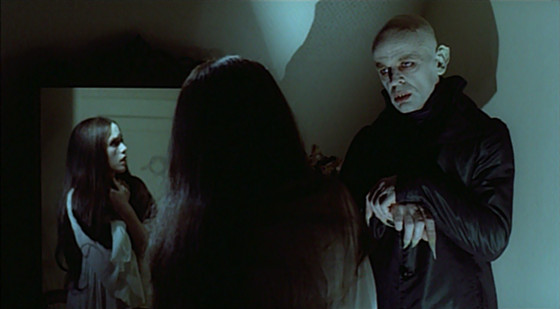
In 1922, F.W. Murnau released his classic film Nosferatu. Adapted from Stoker’s novel, a few alterations had been made (the name Dracula is never used, for example), hoping that this would be enough to avoid a lawsuit. It wasn’t.
Stoker’s widow successfully sued the filmmakers and an order was put out to destroy every print of the film. A few survived and the movie is now seen as a silent masterpiece.
Werner Herzog, a big fan of Murnau’s movie, decided to remake it with Klaus Kinski in the title role. In many ways the films are similar, with Herzog even copying certain shots from the original. But this time Jonathan Harker (Bruno Ganz), usually one of the heroes of the story, falls foul of the Count and it is up to his wife Lucy (Isabelle Adjani), with whom Dracula has fallen in love, to face the evil that has invaded her home town alone.
Herzog, as ever, captures a powerful feeling for the film’s environment. Most adaptations of Dracula rely on “spooky” lighting (i.e. shadows) and actual events to create mood, such as when a carriage comes out of the mist to carry characters to the Count’s castle. But in this version there are passages of film with Harker walking amongst waterfalls, through misty mountains and under ever-shifting cloud patterns that create both atmosphere as well as an extraordinary sense of awe. You almost expect to see God featured in the end credits under production design.
The film takes its time and has many poetic images that make it a more unusual vampire movie. Though a critical and commercial hit in 1979 (partly due to Herzog filming two versions, one in German and the other in English), Nosferatu the Vampyre is too little recognised these days, despite its feminist and satirical strengths, as well as possessing one of the single most beautiful closing shots in a film ever.
8. Dracula: Prince of Darkness (1966)
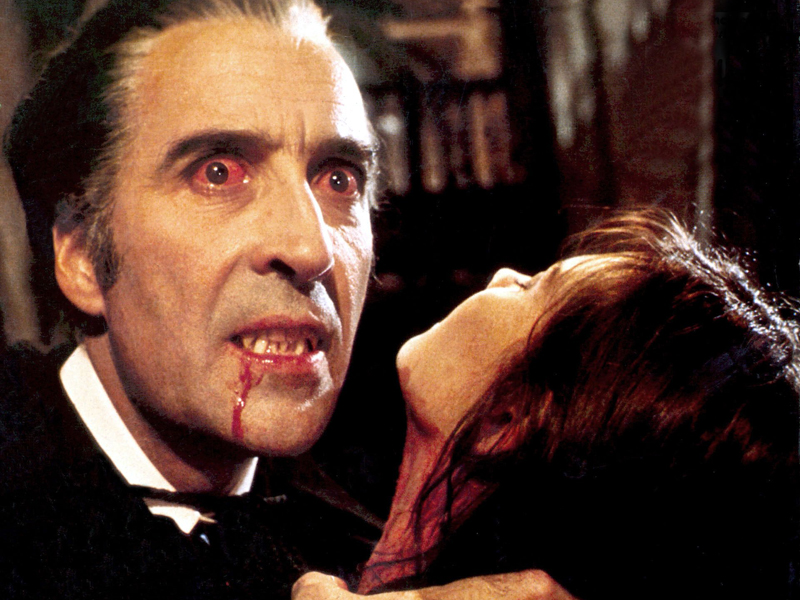
Say the name Dracula and quite probably you’ll picture Christopher Lee. The first film to introduce his iconic Count (Dracula 1958) was a landmark for Hammer Horror, bringing both colour and a more overt sexuality that other versions, due to censorship, had been unable to fully embrace. Eight years passed before Lee returned to the role in this largely forgotten but more than adequate B-movie.
A prologue reminds us of Dracula’s defeat at the hands of Van Helsing. Years later four innocent English tourists find themselves turning to Castle Dracula for shelter when they are abandoned by their terrified coach driver. They find they have been expected as the servant Klove (Philip Latham) explains the deceased master of the castle left instructions for visitors always to be made welcome. Klove then secretly kills one of the unlucky group and uses his blood in a ritual that brings Dracula back from the dead.
Lee claimed that when he read the script, the dialogue he was given was so bad that he refused to say any of it, hence why Dracula only ever hisses. The screenwriter Jimmy Sangster, however, stated that this was impossible because he never wrote Dracula any lines in the first place. “Vampires don’t chat. So I didn’t give him any dialogue.”
If you’re familiar with Hammer’s vampire movies then you’ll know what to expect. It’s not in any way a piece of art, but it has enough tension to last its running time, which is, like a lot of horror movies, not too long. Those who work in genres such as horror seem to understand about getting on with the story, instead of stretching it out until it starts to feel like the audience is being asked to watch the vampire’s life unfold in real time.
So, no masterpiece, but still a lot of fun.
9. Dark Shadows (2012)
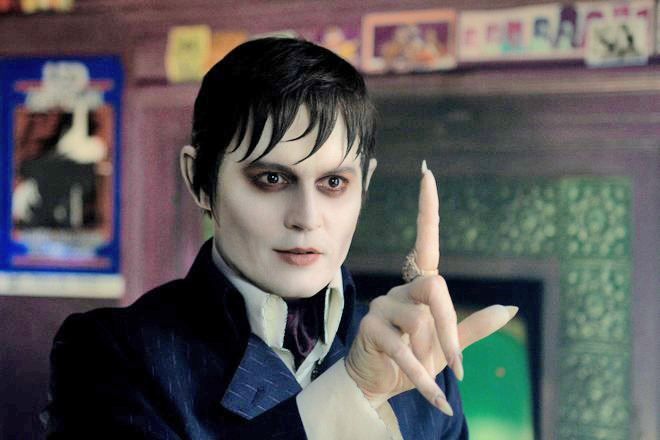
From 1966 until 1971, viewers could tune in to ABC’s gothic soap opera Dark Shadows. Featuring vampires, werewolves, ghosts, man-made abominations, time travel and parallel universes, the show amassed over 1,200 episodes.
It also gained notoriety due its being filmed and transmitted live, meaning that any mistakes or bloopers went out unedited. The amount of compiled footage available online showing fluffed lines (“I am defending the right of this girl to be judged innocent until she is proved innocent! I’m sure that this idea is a little complicated for your mind to absorb…”), crew and equipment wandering into shot, props (often large paintings) falling over, and actors actually holding scripts in their hands, is jaw-dropping.
Tim Burton’s film adaptation seemed an odd choice to some, as the show is little known or discussed these days. Starring Johnny Depp, it tells the story of Barnabas Collins, a man cursed with the immortal life of a vampire by Angelique (Eva Green), a witch who is completely besotted with him. Almost 200 years later the two clash once more, whilst Barnabas meets his descendants and tries to protect them from Angelique.
Perhaps it was a public weariness that was developing towards Burton and Depp as they seemed to be casually making yet another adaptation of something a bit dark and weird (previous collaborations included Charlie and the Chocolate Factory and Alice in Wonderland). Or maybe the fact that not many people in the twenty-first century were too familiar with Dark Shadows hamstrung it from the start. Everyone’s heard of Lord of the Rings, which was a hit, whereas not nearly as many have heard of The Dark Tower, which was a pricey flop.
Burton’s film, though not one of his best and suffering from a lack of surety regarding its tone (a common problem with horror comedies), is certainly not terrible. If you go in with slightly lowered expectations, Dark Shadows is not the worst way to spend your time. And neither is going on YouTube and watching the old TV show’s bloopers.
10. A Girl Walks Home Alone At Night (2014)
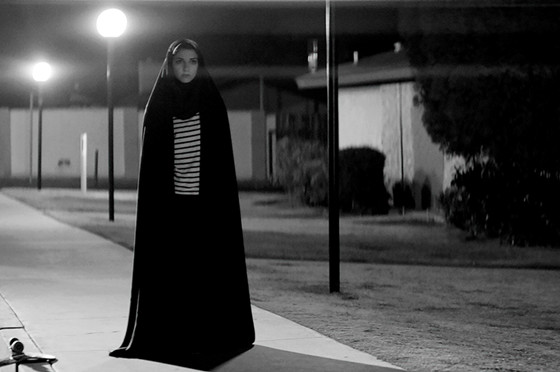
Let the Right One In showed us why vampires can’t cross a threshold uninvited. Ana Lily Amirpour’s feature debut reveals another mysterious aspect of these creatures: how do they manage to effortlessly float across the ground? Answer: they’re on a skateboard.
A Girl Walks Home Alone At Night – marketed as the first Iranian vampire film – is set in Bad City. That name, along with it being shot in black-and-white, may remind you of Sin City, if that particular franchise had something approaching a soul. Whilst all the women in Frank Miller’s comic book world are femme fatales who ensnare tough guys dumb enough to have a heart, the women in Amirpour’s vision are presented as having vulnerability, fears, doubts, desires, strengths, weaknesses and, in the case of one character, a pair of fangs.
Whilst on the one hand it might come across to some as being too self-aware and “cool”, with its James Dean leading man falling in love with a skateboarding vampire who listens to one of the best soundtracks any movie was lucky to have, it also contains all the qualities that are truly unique to cinema.
Ravishing cinematography (where Sin City’s monochrome palette is simply an absence of colour, A Girl… looks like it’s been painted using pure shadow), a languid pace that builds atmosphere and heightens tension, a sense of place like no other, and a twisted love story that plays on the unnerving notion that the person we fall in love with might well be the one for us, but what happens when you discover their taste for blood? This film is brave enough only to lightly suggest that notion and provide no answer. Vampires are scary, but so is anything that leaves us with a question mark and no solution.
And so we come full circle. Fear of the unknown can also lead to a fear of the new. A Girl… is the most recent entry on this list and perhaps the most unusual. Have no fear though, people – it’s well worth a taste.